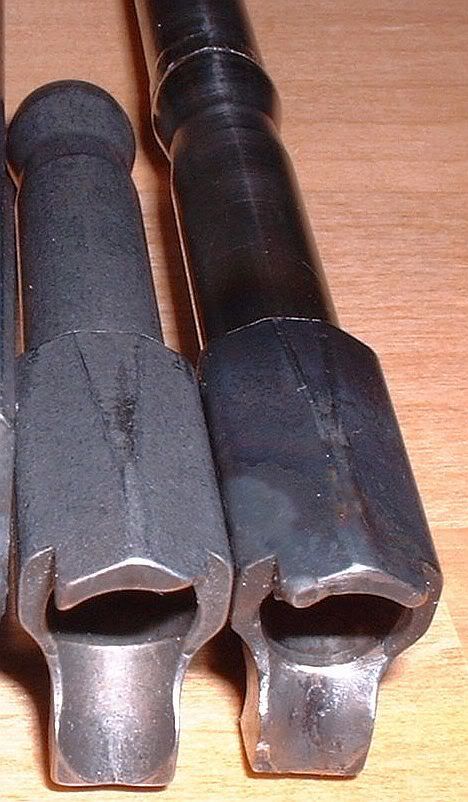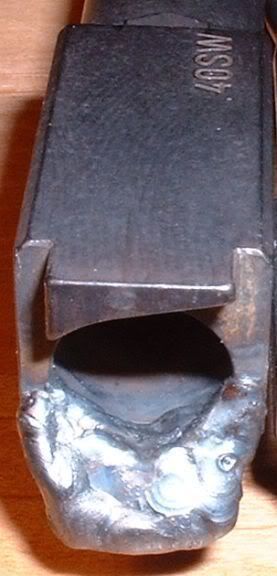I posted about 460 Rowland here on July 2000.
I did the work in May of 2000.
http://thefiringline.com/forums/showthread.php?p=184311#post184311
Looks like I welded up the feed ramp of a P32 32acp in 2000.
Looks like I welded up the feed ramp of a glock 22 40sw in 2002
http://thefiringline.com/forums/showthread.php?p=184311#post184311
CAUTION: The following post includes loading data beyond currently published maximums for this cartridge. USE AT YOUR OWN RISK. Neither the writer, The Firing Line, nor the staff of TFL assume any liability for any damage or injury resulting from use of this information.
Instead of working up to a case bulge, that allowed me to shoot more than double charges in 2002 in my Glock 22.
The problem with kabooms in Glocks was not the gun or the ammo, it was the case support all along.
From there I was able to measure the threshold of many cartridge case head failures.
The weakest cartridge commonly available to the strongest:
..Weakest: 10mm
..next weakest: 25acp
..next weakest: 7.62x39mm with large Boxer primer pocket
..The 1889 Mauser case head built with a large boxer primer has been used on many cartridges besides the 45acp ; 22-250, 243, 6mm Rem, 250 Savage, 257 Roberts, 25-06, 260 Rem, 6.5x55 [US made brass], 270, 7mm-08, 7x57mm, 280, 300Sav, 308, 7.62x51mm, 30-06, 8x57mm, 338F, 358, and 35W.
..The 1950 Win .222 case head is very strong, but will give up the primer
..The 1889 Mauser case head with small Boxer primer is so strong that the primer will always pierce before the primer pocket gets loose. 6mmBR handloaders get the firing pin bushed to try to increase that pressure with the CCI450 magnum small rifle primer.
..The rimmed cases are even stronger, like the 38 S&W, 30-30, or 45/70. They may primer pierce or flow into extractor misfit.
What does it all mean?
I have done a lot of experiments, and I know that the 45acp case head is very strong... to answer the OP's question, but it must have case support.
The other way is to cross section the case head and do a Von Misses calculation on the threshold.
It generally gives the same answer and Quickload's prediction of what the pressure was when the primer pocket yielded, in bottle neck cartridges. But in straight wall, QL is not so good.
I can design a test with strain gauge, Wheatstone bridge, instrumentation amplifier, and storage scope to measure the tangential barrel stretch as a function of chamber pressure. That is not a controlled experiment, because the Roark formula for stress vs strain on that complex open ended tube is not known and the variabilities of placing and bonding the strain gauge both add unknown errors. The actual pressure does not matter anyway, what is important is the effect of pressure. With strong guns, that means looking at the brass.
What does all that mean?
I have shot 460 Rowland loads many times with many brands of 45acp brass. The problems are recoil and case support, not the brass. The brass case head is plenty strong. It needs support on the thin case wall over the feed ramp.




